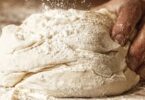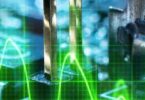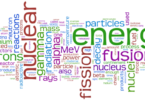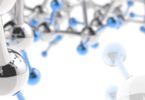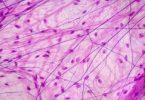Glycolysis is :
(a) Conversion of glucose to heam
(b) Oxidation of glucose to glutamate
(c) Conversion of pyruvate to citrate
(d) Oxidation of glucose to pyruvate
During anaerobic conditions, the rate of glycolysis increases is called as
(a) Compensation point
(b) Extinction point
(c) Warburg effect
(d) Pasteur effect
Between which of the following stages GTP is formed by substrate level phosphorylation:
(a) Succinate to fumarate
(b) Ketoglutarate to succinate
(c) Oxalosuccinate to glutarate
(d) Fumarate to malate
Related: Quiz on major branches of biology
Which one of the following products is formed during glycolysis of glucose?
(a) Pyruvic acid
(b) Carbon dioxide
(c) Citric acid
(d) Ethanol
Anaerobic process after glycolysis is called
(a) TCA
(b) Calvin cycle
(c) Krebs cycle
(d) Fermentation
What is the other name of glycolysis?
(a) EMP pathway
(b) TCA pathway
(c) HMS pathway
Between which of the following stages GTP is formed by substrate level phosphorylation:
(a) Succinate to fumarate
(b) Ketoglutarate to succinate
(c) Oxalosuccinate to glutarate
(d) Fumarate to malate
The end product of glycolysis is
(a) Acetyl Co–A
(b) Citric acid
(c) Pyruvic acid
(d) Fumeric acid
Related: what is the capital of Finland?
In glycolysis, the end product is
(a) Protein is converted to glucose
(b) Glucose is converted into fructose
(c) Starch is converted into glucose
(d) Glucose is converted into pyruvic acid
How many water molecules are used in glycolysis?
(a) One
(b) Two
(c) Three
(d) Four
When the NADH2 formed in glycolysis reacts with an inorganic element, the nature of respiration is
(a) Aerobic / oxy respiration
(b) Anaerobic respiration
(c) Fermentation
(d) Photorespiration
An (a)
In glycolysis, during oxidation, electrons are removed by
(a) NAD+
(b) Molecular oxygen
(c) ATP
(d) Glyceraldehyde-3-phosphate
Related: immune system mcq
Which of the following processes occurs in glycolysis?
(a) Oxidation
(b) Reduction
(c) Hydrogenation
(d) Fixation
During fermentation, alcohol is formed from
(a) Sugars
(b) Proteins
(c) CO2 + H2O
Which group of the following scientists discovered the EMP pathway of glycolysis?
(a) Embden, Mayerhoff and Parnas
(b) Emerson, Hoffman and Peterson
(c) Embden, Morrison, and Pitcher
(d) Avery, McLeod and McCarthy
How many ATP are used in glycolysis or For complete phosphorylation of a glucose molecule, how many ATP molecules are required?
(a) 4
(b) 2
(c) 6
(d) 8
Related: quiz on Animal tissues
The common phase between aerobic and anaerobic respiration is called
(a) Tricarboxylic acid cycle
(b) Oxidative phosphorylation
(c) Embden, Meyerhoff, Parnas cycle
(d) Kreb’s cycle
Glycolysis takes place in
(a) Mitochondria
(b) Cytoplasm
(c) Both mitochondria and cytoplasm
(d) Vacuole
The net gain of ATP in glycolysis is
(a) 6
(b) 2
(c) 4
(d) 8
Besides the net gain of 2 ATP molecules in glycolysis which other molecules are simultaneously formed
(a) FADH2
(b) NADPH2
(c) NADH2
(d) FAMH2
Related: endocrine gland quiz
Which one of the following is the first step of glycolysis?
(a) Breakdown of glucose
(b) Phosphorylation of glucose
(c) Conversion of glucose into fructose
(d) Dehydrogenation of glucose
The number of molecules of pyruvic acid formed from one molecule of glucose at the end of glycolysis is
(a) 1
(b) 2
(c) 3
(d) 4
In glycolysis besides the formation of 2 ATP, two molecules of other compound are also formed. The name of that compound is
(a) NADH2
(b) NADPH2
(c) ADP
(d) H-atom
Which group of the following scientists discovered the EMP pathway of glycolysis?
(a) Embden, Mayerhoff and Parnas
(b) Emerson, Hoffman and Peterson
(c) Embden, Morrison and Pitcher
(d) Avery, McLeod and McCarthy
Related: Biotechnology questions
Glycolysis occurs
(a) In cytoplasm
(b) In aerobic respiration
(c) In anaerobic respiration
(d) All of the above
During glycolysis ATP and Mg2+ coenzymes function
(a) For phosphoglucoisomerase
(b) For glucokinase
(c) For pyruvic kinase
(d) For phosphoglyceraldehyde-3-phosphate dehydrogenase
Which is not true for glycolysis?
(a) End product is CO2, H2O
(b) Substiate level phosphorylation
(c) Production of ATP
(d) Expenditure of ATP
Related: Photosynthesis practice quiz
The stage upto which glycolysis and fermentation is common
(a) Dihydroxy acetone
(b) 3-phosphoglyceraldehyde
(c) Pyruvate
(d) Glucose-6-phosphate
The reactions of glycolysis are
(a) Reversible
(b) None reversible
(c) Both (a) and (b)
Number of CO2 molecules evolved in glycolysis is
(a) 2
(b) 1
(c) 3
(d) 0
The intermediate of glycolysis which undergoes lysis or splitting is
(a) Dihydroxyacetone 3-phosphate
(b) Fructose 1,6-diphosphate
(c) Glyceraldehyde 3-phosphate
(d) Glucose 6-phosphate
Related: quiz on Electrostatics
In glycolysis, glucose splits into compounds which are
(a) 5-C
(b) 4-C
(c) 2-C
(d) 3-C
Harden and Young’s ester is formed during glycolysis from
(a) Fructose-6- phosphate
(b) Glucose-6-phosphate
(c) Glucose

